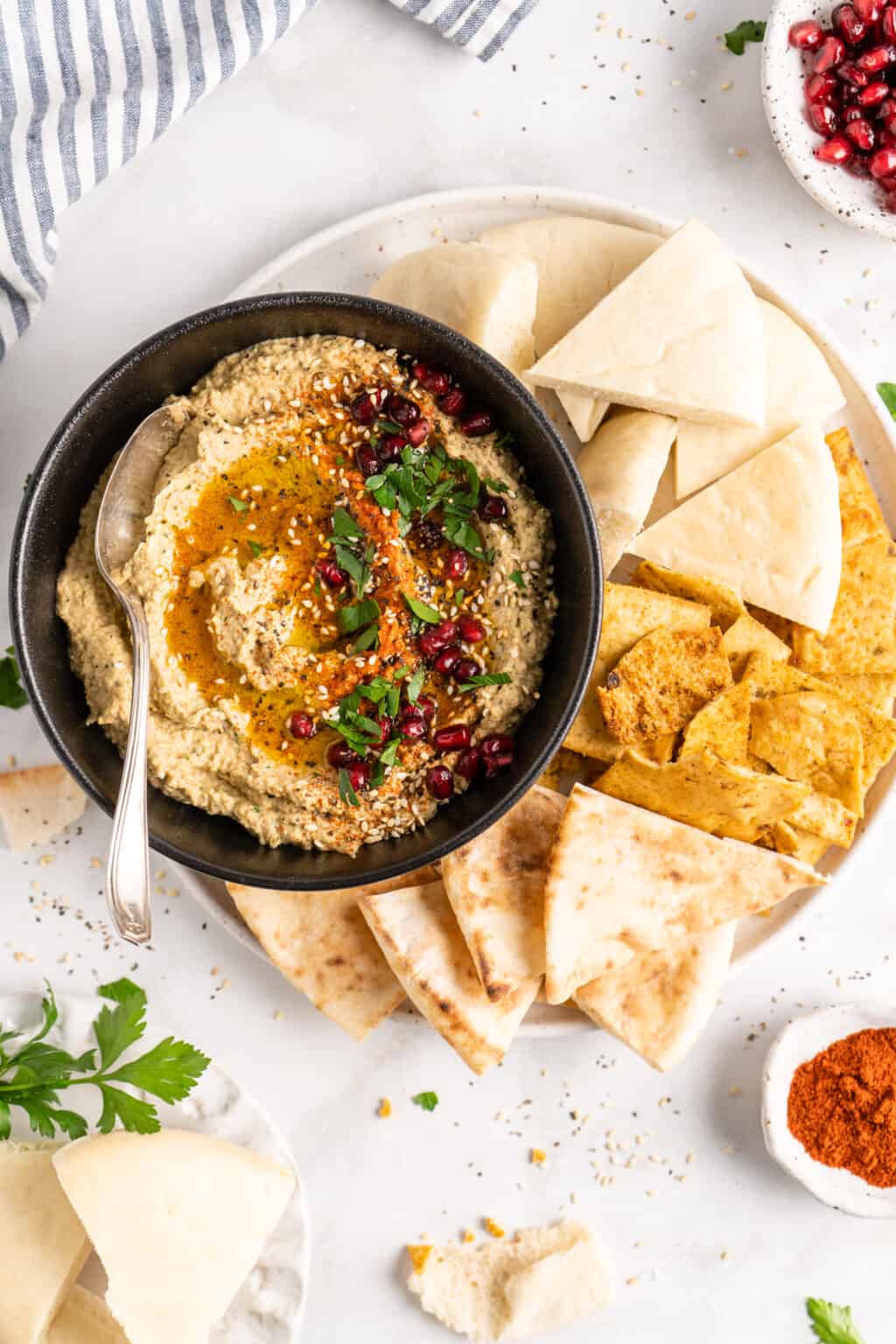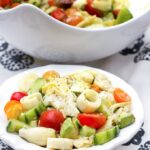A food processor is a versatile kitchen tool that can make meal preparation faster and easier. With the right recipes, you’ll find it can handle everything from chopping vegetables to mixing dough.
In this collection, you’ll learn how to make the most of your food processor to create a variety of tasty dishes. These recipes are perfect for anyone looking to save time and effort in the kitchen while making delicious meals.
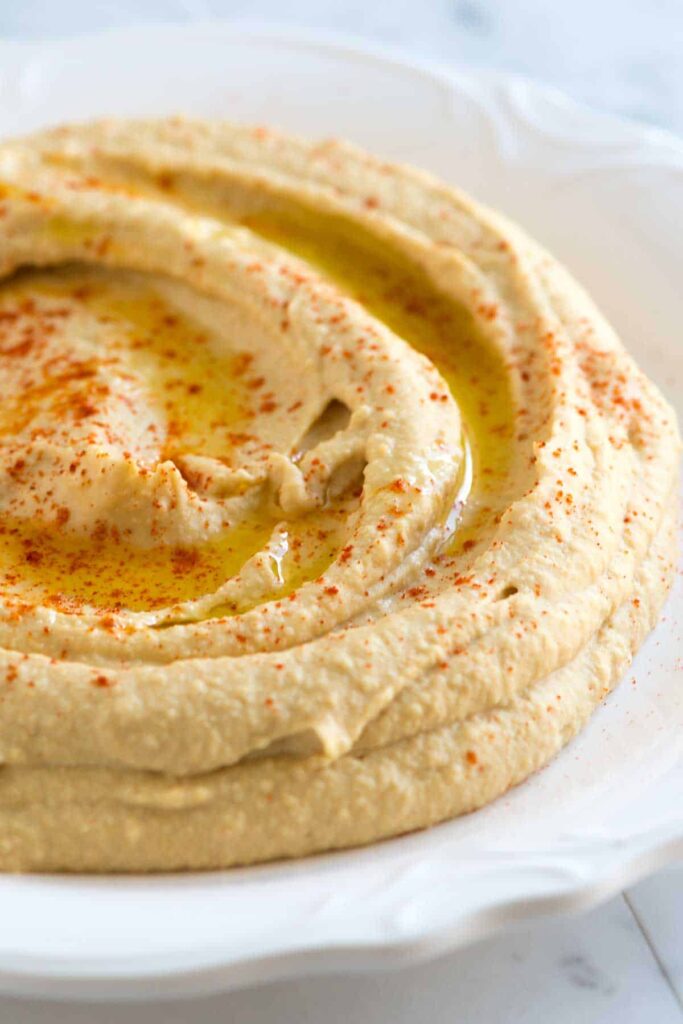
1) Hummus
Making hummus at home with a food processor is quick and straightforward. You will need chickpeas, tahini, lemon juice, garlic, and olive oil.
Start by draining and rinsing a can of chickpeas. Then, add the chickpeas to the food processor. Pour in two tablespoons of tahini and the juice of one lemon.
Toss in two cloves of peeled garlic. Turn on the food processor and blend the mixture until it is smooth.
While the mixture is blending, slowly drizzle in about three tablespoons of olive oil. If the hummus is too thick, you can add a tablespoon of water at a time until it reaches your desired consistency.
To serve, transfer the hummus to a bowl. Drizzle with a bit more olive oil and sprinkle with paprika or chopped parsley for garnish.
Hummus is perfect as a dip with fresh veggies, pita bread, or chips. You can also spread it on sandwiches or wraps for added flavor. Making your own hummus allows you to adjust the taste and texture to your liking. Enjoy your homemade hummus!
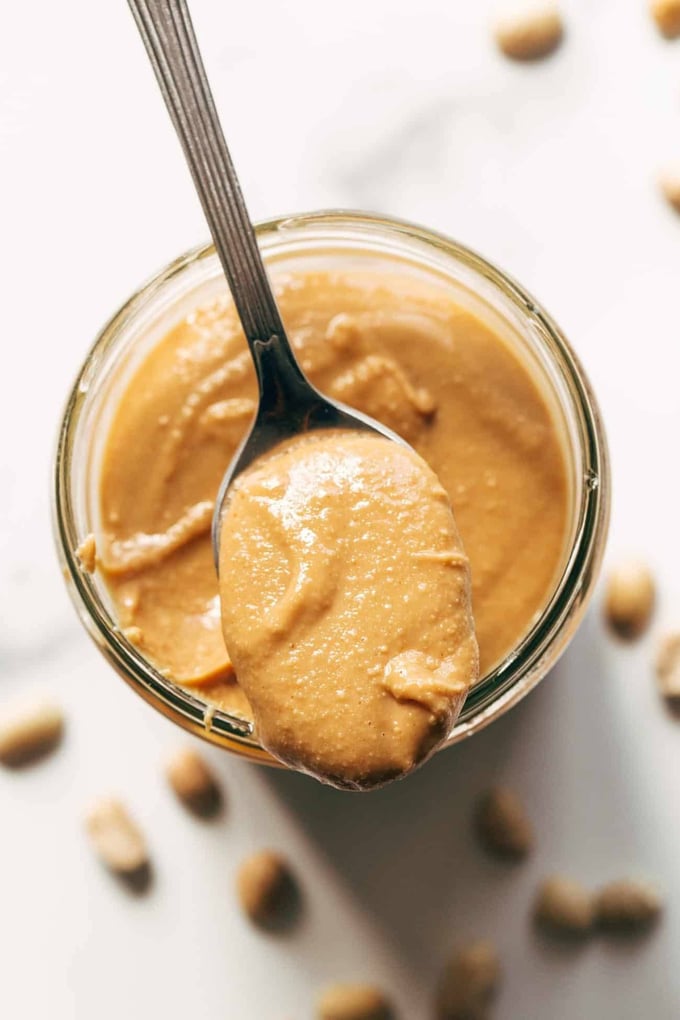
2) Peanut Butter
Making peanut butter at home is simple with a food processor. Start by placing your peanuts in the processor. Turn it on and let it run for 4-5 minutes.
You’ll notice stages where the peanuts turn into crumbs, form a ball, and finally become smooth and creamy. Scrape the sides of the bowl periodically to ensure even processing.
For creamy peanut butter, you can stop here. If you prefer it crunchy, add some extra peanuts towards the end and pulse a few times until they are just chopped.
You can also customize your peanut butter with a bit of salt, honey, or even a splash of vanilla extract. This way, you always have your preferred taste on hand.
Store your homemade peanut butter in an airtight container in the refrigerator. Enjoy it on sandwiches, with fruit, or straight from the jar.
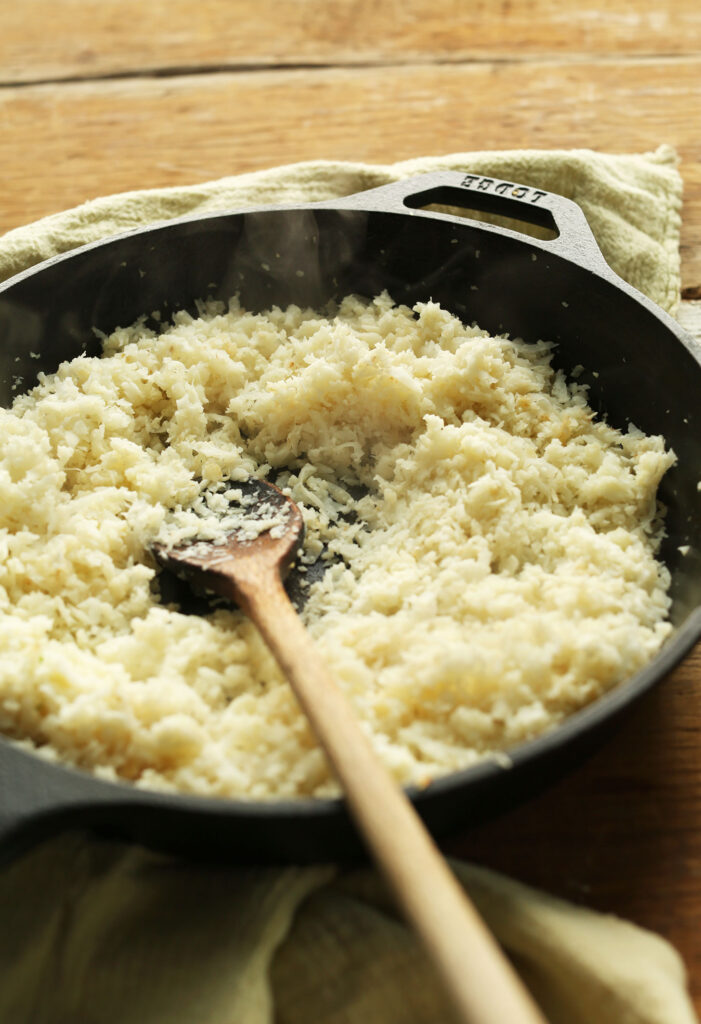
3) Cauliflower Rice
Cauliflower rice is a healthy and versatile substitute for traditional rice. To make it, start by washing and drying a head of cauliflower. Remove all the greens and cut the cauliflower into smaller pieces.
Using the grater attachment on your food processor, grate the cauliflower into rice-size pieces. Make sure to push down the cauliflower using the food pusher.
If the cauliflower is wet, transfer it to a paper towel to dry it out. You can cook cauliflower rice by steaming, microwaving, or sautéing it.
For steaming, place the cauliflower rice in a steamer basket over boiling water and cover for about 5 minutes until tender.
To microwave, put the cauliflower rice in a microwave-safe bowl, cover with a damp paper towel, and microwave for 3-5 minutes on high.
For sautéing, heat a tablespoon of oil in a large skillet over medium heat. Add the cauliflower rice, cover with a lid, and cook for 5-8 minutes.
You can season the rice with soy sauce, salt, or pepper to enhance the flavor. Use cauliflower rice in dishes like stir-fries or fried rice to keep meals light and nutritious.
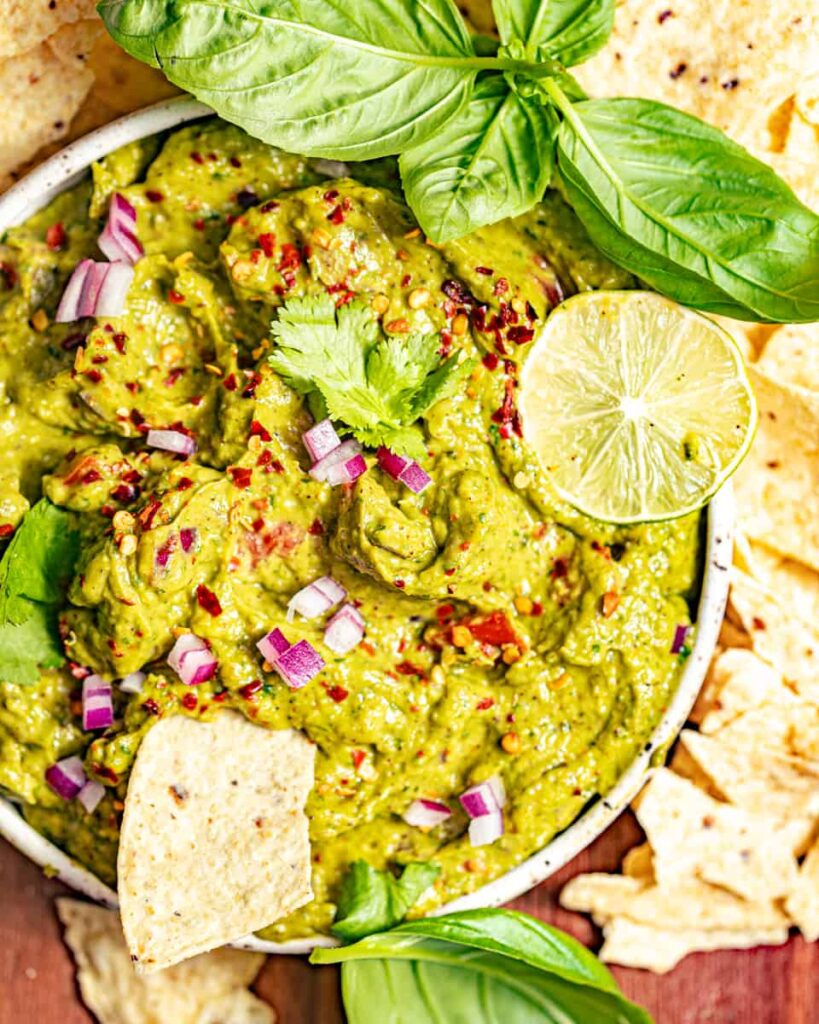
4) Guacamole
Guacamole is a delicious and versatile dip. Making it in a food processor is quick and easy. You can control the texture, from smooth to chunky, by adjusting the processing time.
Start with ripe avocados. Slice them in half, remove the pit, and scoop out the flesh. Add the avocados to your food processor.
Include ingredients like red onion, cilantro, and lime juice. These add flavor and brightness to your guacamole.
For a milder taste, use a jalapeño instead of a serrano chili pepper. If you prefer it spicier, include seeds or add extra peppers.
Pulse the mixture until you reach your desired consistency. You can make it smooth by processing longer or leave it chunky by pulsing a few times.
Taste the guacamole and adjust the seasoning. Add more salt, pepper, or lime juice if needed.
Transfer the guacamole to a serving bowl. Enjoy it with chips, on tacos, or as a topping for various dishes.
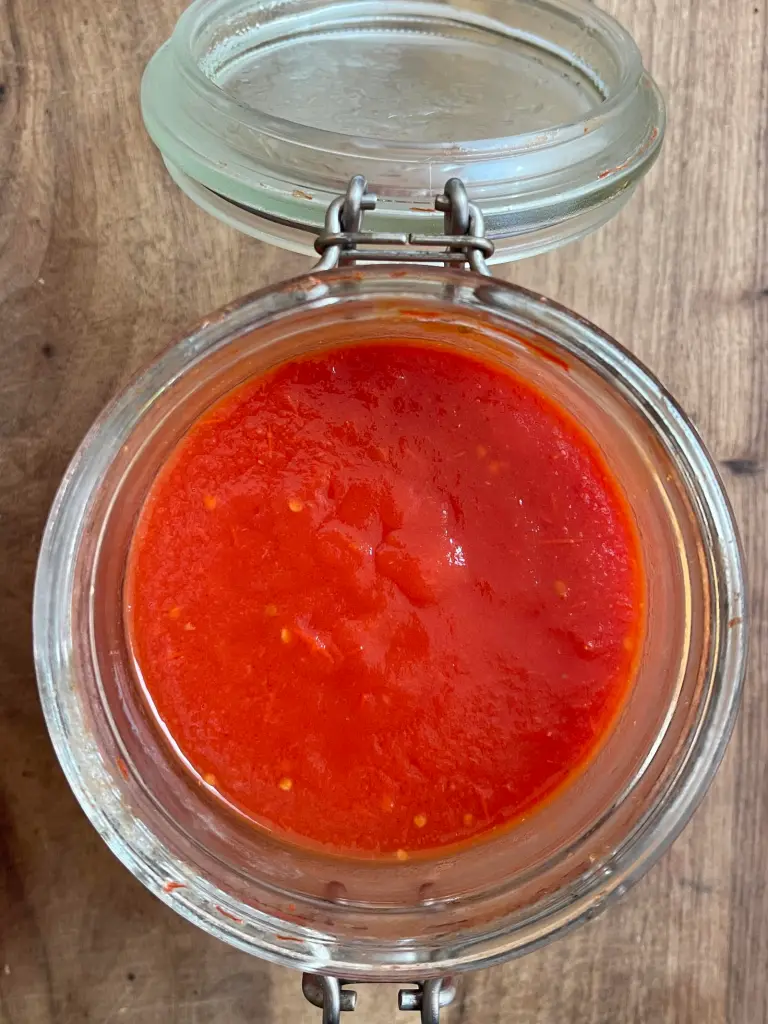
5) Tomato Sauce
Making tomato sauce with a food processor is fast and simple. Start by chopping your fresh tomatoes. You don’t need to peel them. Quarter them and place them in the food processor.
Pulse the tomatoes a few times until they reach your desired consistency. Transfer the puree to a large pot. Repeat this process with all the tomatoes.
In the pot, bring the tomato puree to a boil over medium-high heat. Once boiling, reduce the heat to a simmer. Stir occasionally. Let the sauce simmer for about 90 minutes. This will let the flavors develop.
While the sauce is simmering, you can add other ingredients. Caramelized onions add a touch of sweetness. Just cook sliced onions in olive oil until they turn golden brown. Add them to the simmering sauce.
You can also finely chop carrots and celery in your food processor. Sauté these vegetables until soft and add them to the sauce. These additions create a richer, more complex flavor.
Season your sauce generously with salt and pepper. For a spicy kick, add some red pepper flakes. Adjust the seasoning to your taste.
When the sauce reaches the desired thickness, it’s ready to use. You can serve it over pasta, use it in pizza, or store it for later.
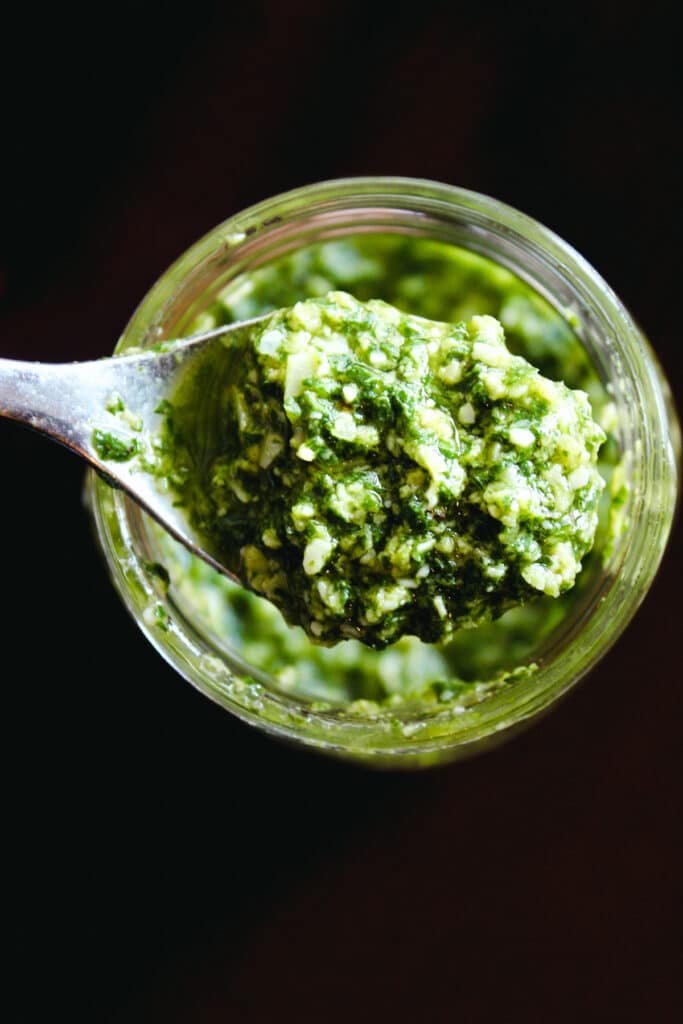
6) Pesto
Pesto is a classic and versatile sauce. It’s great for pasta, sandwiches, and even as a dip. Making it with a food processor saves time and effort.
Start with fresh basil leaves. Add them to your food processor along with garlic and pine nuts. These are the core ingredients that will give your pesto its traditional flavor.
Pulse the mixture until the basil is finely chopped. Gradually add olive oil while the machine is running. This helps to emulsify the sauce, making it smooth and well-blended.
Don’t forget to add grated Parmesan cheese. This adds a rich, savory flavor. Season with salt and pepper to taste.
Store your pesto in an airtight container in the fridge. It should last for about a week. Enjoy it with your favorite dishes!
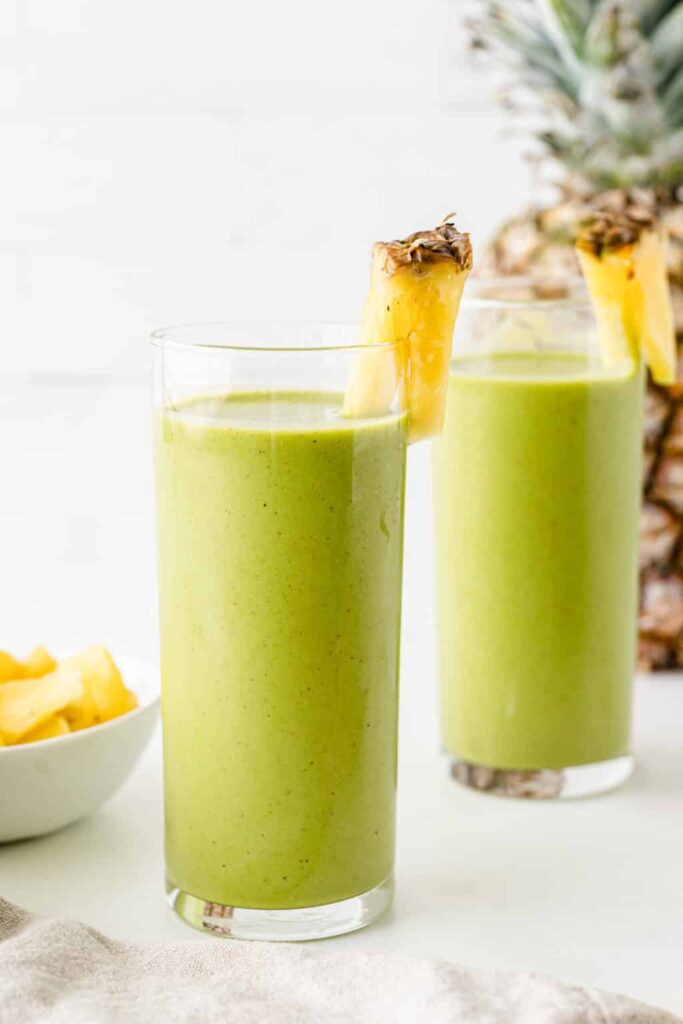
7) Smoothie
Using a food processor, you can make delicious, creamy smoothies. Start by choosing your favorite fruits, either fresh or frozen. Frozen fruits work well, but check your processor’s manual to ensure it can handle them.
Add a liquid base like milk, coconut water, or plain water. This helps create a pourable consistency. You can use animal or plant-based milk depending on your preference.
Include a handful of leafy greens if you want a nutrient boost. Spinach and kale are popular choices. They blend easily and add vitamins without changing the smoothie’s taste much.
Next, you can add extras like nut butter, protein powder, or seeds. These ingredients can make your smoothie more filling and nutritious.
Turn on your food processor and blend everything until smooth. You might need to stop occasionally to scrape down the sides of the bowl.
Taste your smoothie and adjust flavors as needed. If it’s too thick, add more liquid. For more sweetness, add a bit of honey or a few dates.
Smoothies made in a food processor can be just as creamy and delicious as those made in a blender. Enjoy your healthy and refreshing drink!
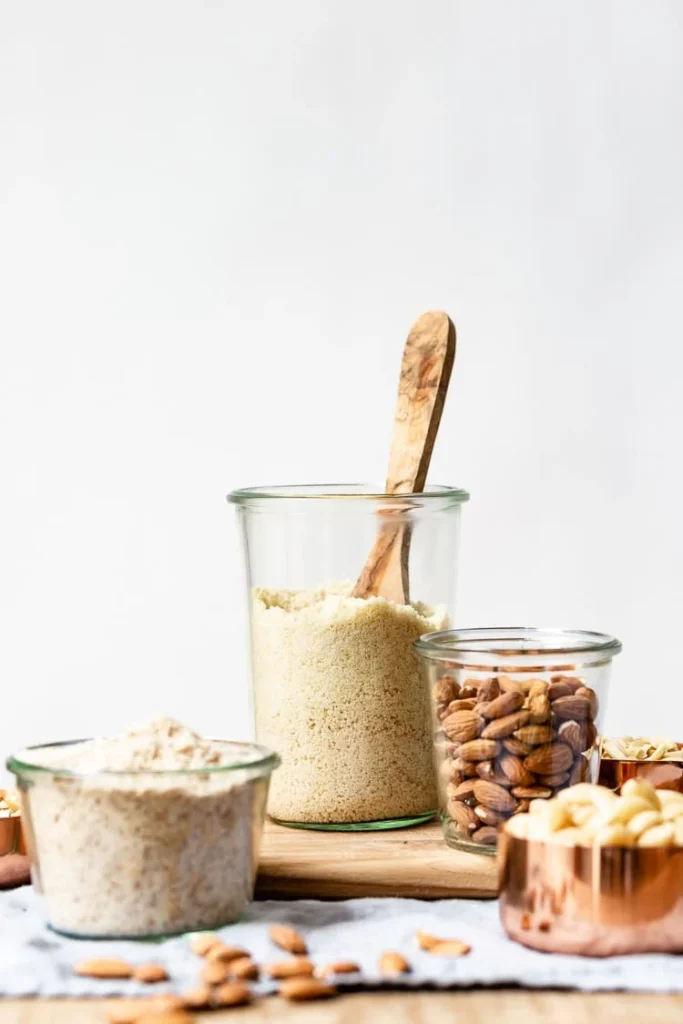
8) Almond Flour
Almond flour is a versatile and gluten-free ingredient that you can easily make at home with a food processor. It’s perfect for baking and adds a nutty flavor to your recipes.
Start by using blanched almonds. Place them in your food processor and cover. Process at low speed until the almonds reach a sand-like consistency.
Stop the processor and check for any remaining coarse pieces. Continue processing until the almonds turn into a fine, powdery flour. Sift the almond flour through a mesh bowl to ensure your flour is smooth.
Almond flour is great for making bread, cakes, and cookies. It can be used in both sweet and savory recipes. Try experimenting with it in your favorite dishes for a healthy twist.
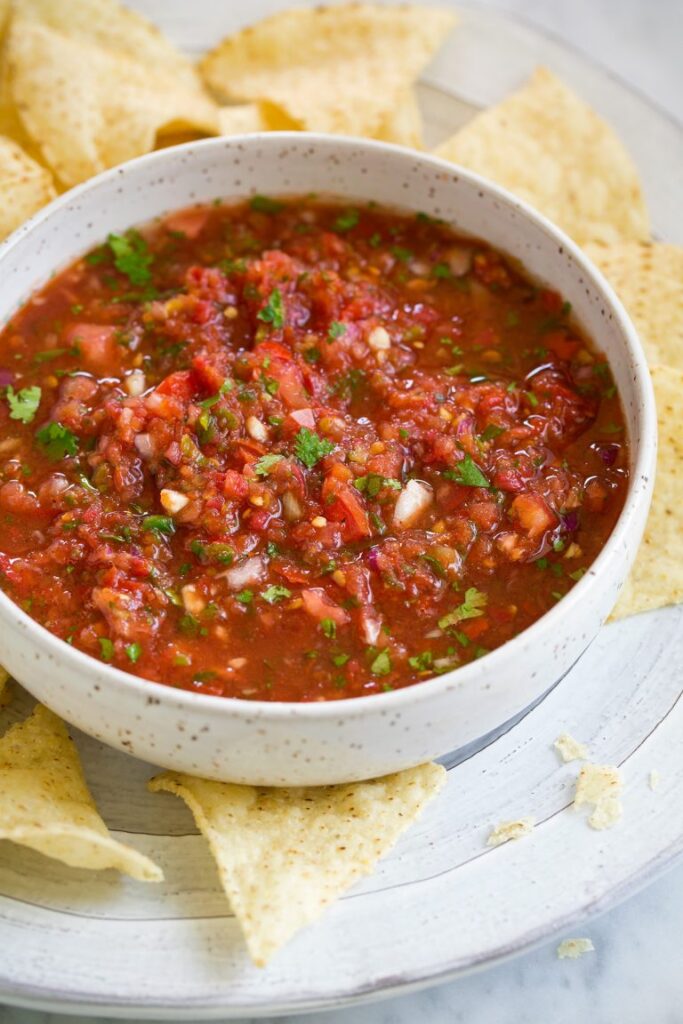
9) Salsa
Making salsa with a food processor is quick and easy. Start by roughly chopping your cilantro, jalapeño, onion, and garlic. Add them to the food processor. Pulse the ingredients a few times until they are chopped but still chunky.
Next, cut your tomatoes into quarters and remove the stems. Add the tomato quarters to the food processor and pulse again until the tomatoes are incorporated. Be careful not to over-process; you want some texture in your salsa.
Add lime juice and a pinch of salt and pepper. Pulse once more to mix everything together. Taste and adjust the seasoning if needed. Let the salsa marinate for a couple of hours in the fridge to allow the flavors to meld.
Serve your salsa with chips, on tacos, or as a topping for grilled meats. Enjoy the burst of fresh flavors in every bite!
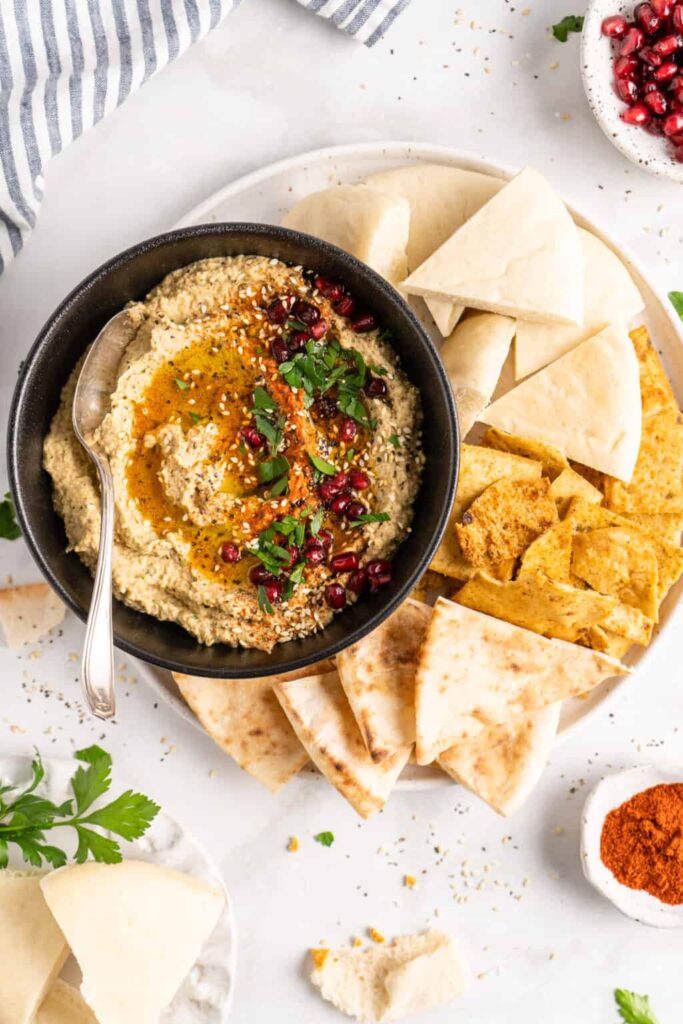
10) Baba Ghanoush
Baba Ghanoush is a creamy and smoky eggplant dip that’s perfect for snacking or as an appetizer. It’s made with roasted eggplant, tahini, garlic, lemon juice, and various seasonings. The flavors are rich and complex, offering a delightful blend of smokiness from the eggplant and tanginess from the lemon.
To make Baba Ghanoush, start by roasting the eggplant. You can either grill it over medium heat or roast it in the oven. Make sure to turn the eggplant occasionally until it’s tender and charred on all sides. This process usually takes 30 to 40 minutes.
Once roasted, let the eggplant cool for a few minutes. After it’s cool enough to handle, peel off the skin and scoop out the flesh. Place the eggplant flesh in a food processor. Add tahini, minced garlic, freshly squeezed lemon juice, salt, and pepper.
Blend until smooth and creamy. Taste and adjust the seasonings if needed. If you prefer a bit more of a kick, add a pinch of crushed red pepper flakes. Once it’s blended to your liking, transfer the Baba Ghanoush to a serving bowl.
For best results, chill in the fridge for about 30 minutes to allow the flavors to meld. Serve with pita bread, fresh veggies, or as a spread on sandwiches. Enjoy your homemade Baba Ghanoush!
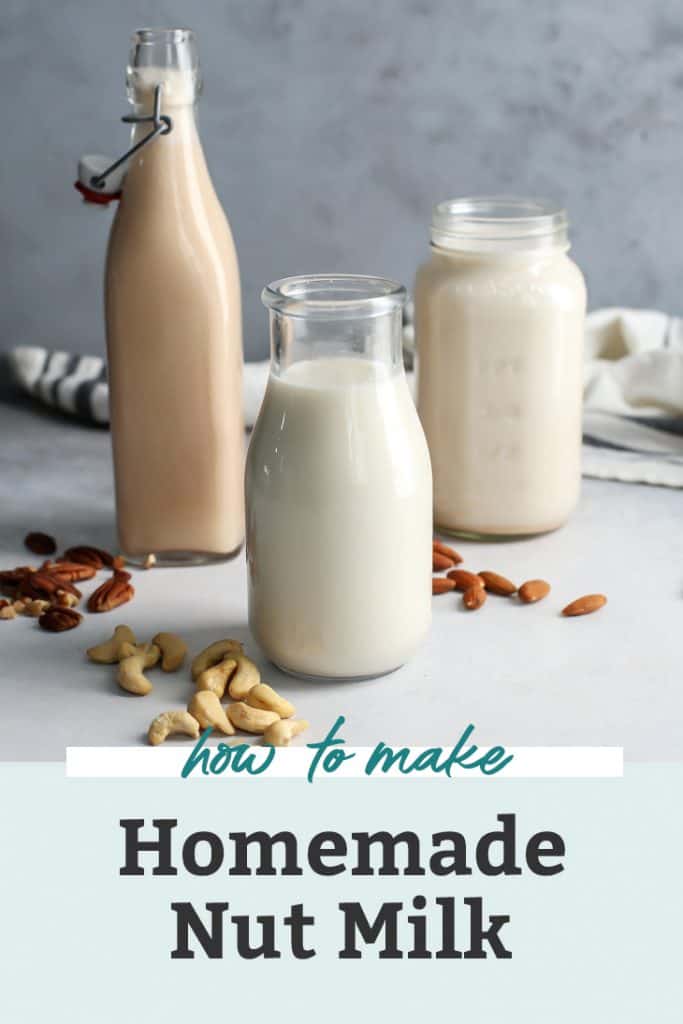
11) Nut Milk
Nut milk is a great alternative to dairy milk. You can make it easily at home with just a few ingredients and a food processor.
Start by soaking 1 cup of nuts (like almonds or cashews) in water overnight. This softens them and makes them easier to blend.
The next day, drain the soaking water and rinse the nuts. Add the nuts to your food processor with 4 cups of fresh water. If you want creamier milk, use a bit less water.
Blend the mixture on high speed for 2-3 minutes until smooth. You’ll notice the liquid becoming creamy and opaque.
After blending, you’ll need to strain the nut milk. Use a nut milk bag, a clean dish towel, or a mesh strainer over a large bowl or pitcher.
Pour the blended mixture through the strainer to separate the liquid from the solid pulp. Squeeze or press down to get as much liquid out as possible.
Transfer the strained nut milk to a jar or bottle and store it in the fridge. It should last 3-5 days. Shake well before each use.
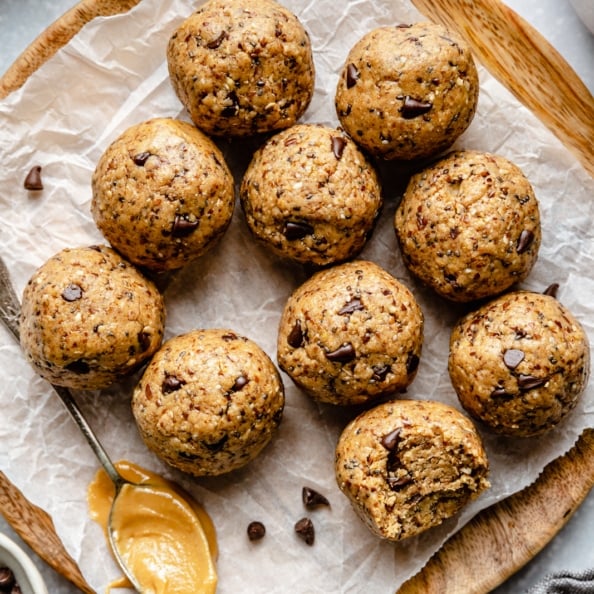
12) Energy Balls
Energy balls are quick, no-bake snacks packed with nutrients. You’ll love how easy they are to make using your food processor.
Start by blending oats in the food processor until they turn into a fine flour. Add dates, nut butter, and a sweetener like maple syrup.
Turn the food processor on for a couple of minutes until you get a thick dough. If the mix is too wet, add more oats. If it’s too dry, add more nut butter.
Once the dough is ready, scoop out small portions, and roll them into balls with your hands. Place the energy balls in the fridge for about 30 minutes to firm up.
These snacks don’t just taste great, but they’re also perfect for on-the-go energy boosts.
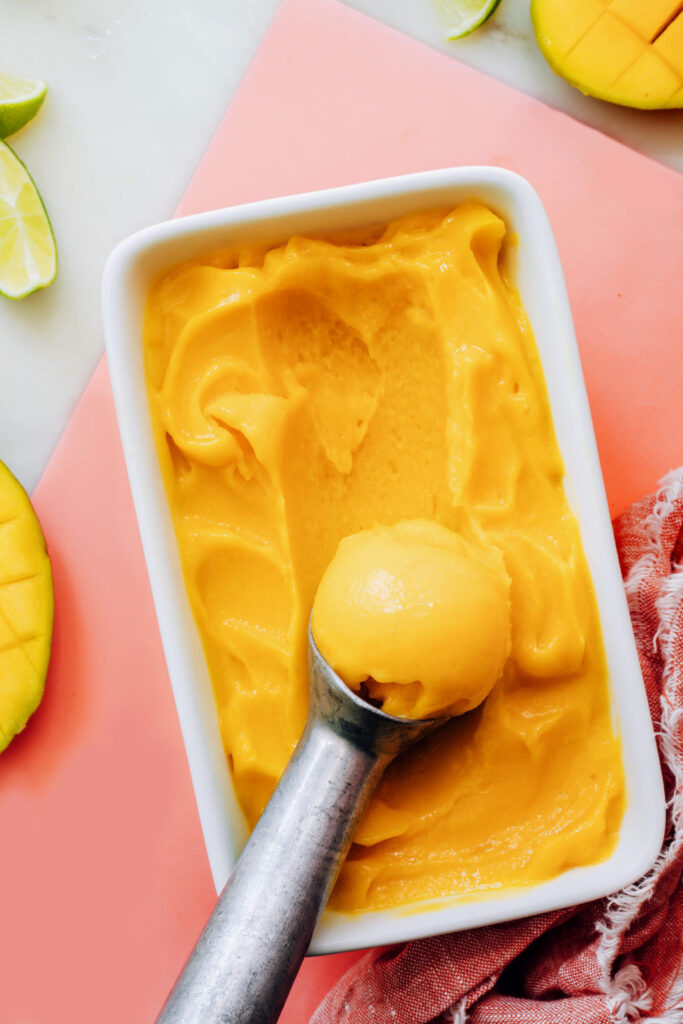
13) Sorbet
Sorbet is a refreshing and simple dessert that you can easily make using a food processor. It’s a great way to enjoy your favorite fruits in a cool, smooth form without the need for an ice cream maker.
Choose your favorite frozen fruits like apricots, mangoes, or berries. Using a food processor, blend the frozen fruit until it starts to break down.
Add a bit of coconut cream or a neutral sweetener like agave nectar to enhance the flavor and texture. For added zest, you can also mix in a bit of lemon or lime juice.
Pulse the mixture until it reaches a smooth consistency. Make sure to scrape down the sides occasionally to ensure everything is blended well.
Serve the sorbet immediately for a soft texture or freeze it for a couple of hours if you prefer a firmer consistency. This method works with various fruits, so feel free to experiment with different flavors.
Making sorbet at home lets you control the ingredients, resulting in a healthier, delicious treat that’s perfect for hot days.
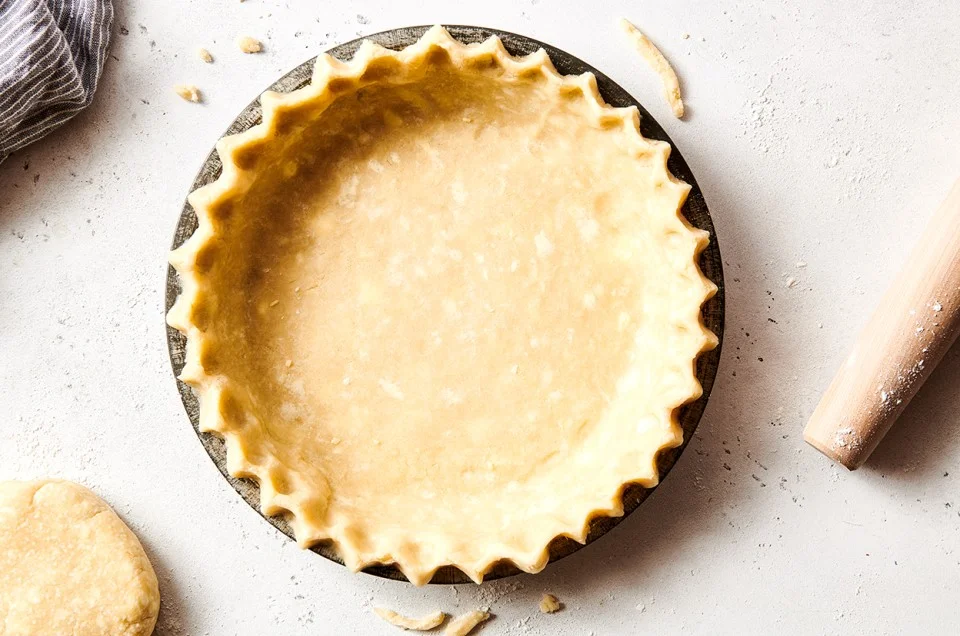
14) Pie Dough
Making pie dough in a food processor is quick and easy. Start by adding your flour, sugar, and salt to the food processor bowl. Pulse a few times to mix the dry ingredients.
Next, add cold, cubed butter and pulse until the mixture looks like coarse crumbs. This usually takes about 10-20 pulses. Cold butter helps the dough stay flaky and tender.
Gradually add ice water, one tablespoon at a time, while pulsing. Stop when the dough starts to come together. It should hold its shape when you squeeze it in your hand, but not be too wet.
Gather the dough into a ball and flatten it into a disk. Wrap it in plastic wrap and chill in the refrigerator for at least an hour. Chilling helps relax the gluten and makes the dough easier to roll out.
When you’re ready to use the dough, roll it out on a floured surface to your desired thickness. It’s great for all types of pies, from sweet to savory.
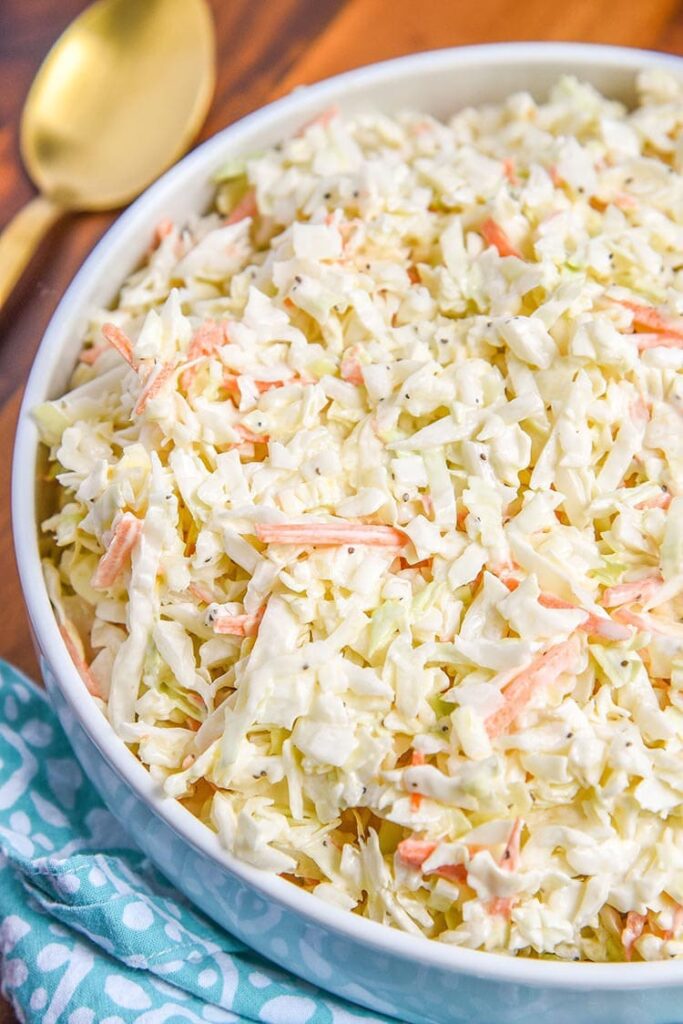
15) Coleslaw
Coleslaw is a quick and tasty dish to make with your food processor. Start by shredding cabbage and carrots using the shredding attachment. This will give you a fine texture that’s perfect for coleslaw.
Once shredded, place the cabbage and carrots in a large bowl. Next, add mayonnaise, vinegar, sugar, salt, and pepper. These ingredients combine to create a classic coleslaw dressing.
For a creamier coleslaw, you can add extra mayonnaise. If you prefer a tangier flavor, try adding some Dijon mustard. Pulse everything together in the food processor until well mixed.
You can serve your coleslaw right away or let it chill in the refrigerator. This will allow the flavors to meld together nicely. If you like your coleslaw a bit more liquid, add some buttermilk or regular milk.
Using your food processor makes the preparation quick and easy. Enjoy this simple, delicious side dish any time!
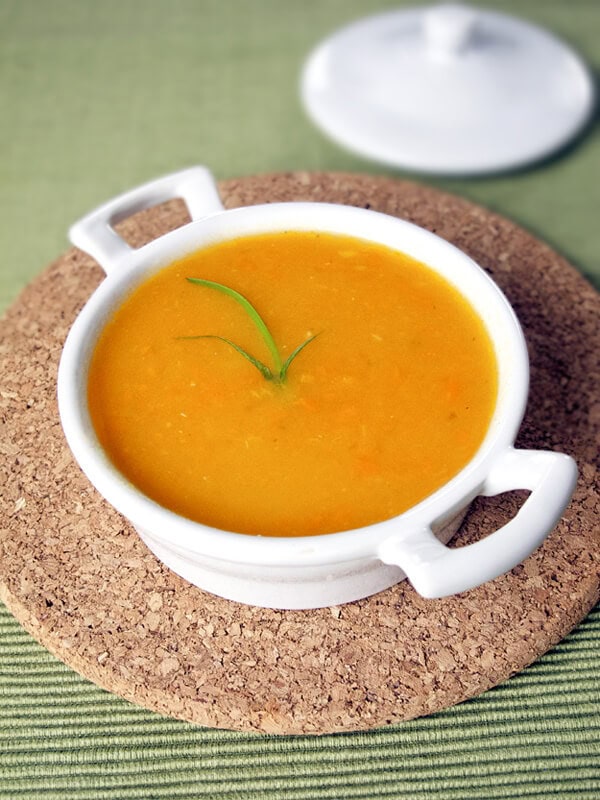
16) Vegetable Soup
Vegetable soup is a versatile and healthy option that you can easily make with a food processor. It’s perfect for any season and can be adapted to include your favorite vegetables.
Start by chopping onions, carrots, and celery in the food processor. These form the base of many vegetable soups, adding sweetness and depth.
Next, add ingredients like potatoes, zucchini, or beans. The food processor will quickly chop these into uniform pieces for even cooking.
For a creamy soup, blend all the cooked vegetables together. You can add cream or milk for extra richness. If you prefer a chunkier soup, blend only half the vegetables and mix them back in with the rest.
Add herbs like thyme, basil, or bay leaves for added flavor. Fresh herbs can be finely chopped in the food processor before adding them to the pot.
After cooking, taste your soup and adjust the seasoning with salt and pepper. Serve hot, accompanied by crusty bread or a side salad for a complete meal.
Vegetable soup is easy to customize, nutritious, and delicious. Using a food processor makes preparation quick and efficient.
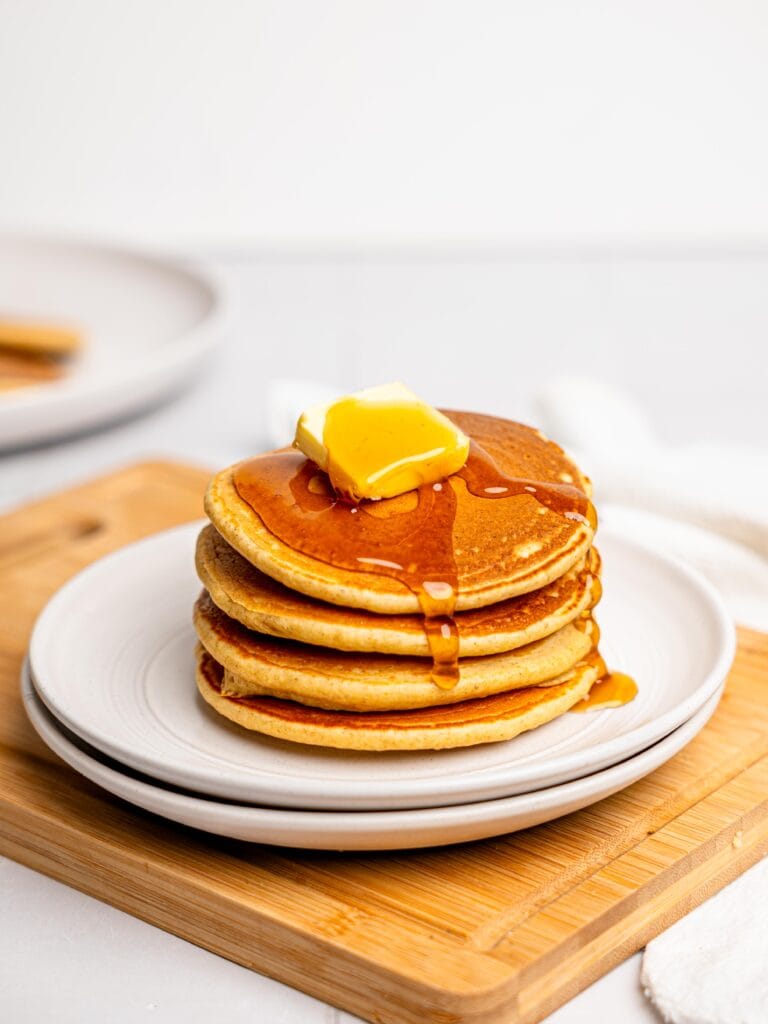
17) Pancake Batter
Using a food processor to make pancake batter saves time and ensures a smooth mix. Start by combining flour, sugar, baking powder, salt, and baking soda in the processor. A key ingredient is malted milk powder, which adds a slight richness.
Blend the dry ingredients for about 30 seconds. This helps to evenly distribute the leavening agents.
Next, add eggs, milk, and melted butter or oil. Pulse the processor just until the batter is mostly smooth but still has some lumps. Over-mixing can make your pancakes tough.
Let the batter rest for about 30 minutes before cooking. This allows the flour to hydrate and results in fluffier pancakes. Use a preheated griddle to get golden, delicious pancakes every time.
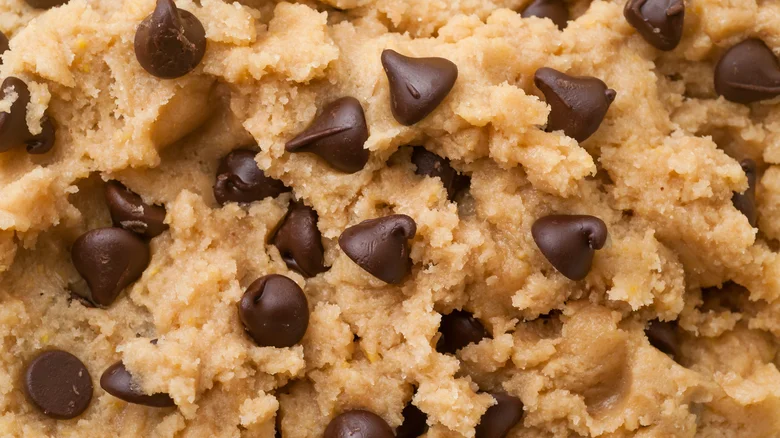
18) Cookie Dough
You can use your food processor to make cookie dough quickly and easily.
Start by placing the flour, sugar, butter, and salt in the bowl of your food processor. Pulse these ingredients until the mixture looks like coarse meal.
Next, lightly beat egg yolks and vanilla in a small bowl. With the motor running, pour this mixture into the food processor. Process just until a dough forms.
You can also add nuts or chocolate chips. Do this by mixing them in by hand after the dough has formed.
Using a food processor helps to mix the ingredients evenly and quickly. This results in a smoother cookie dough, with less time and effort. Enjoy baking your cookies without the hassle of traditional mixing methods.
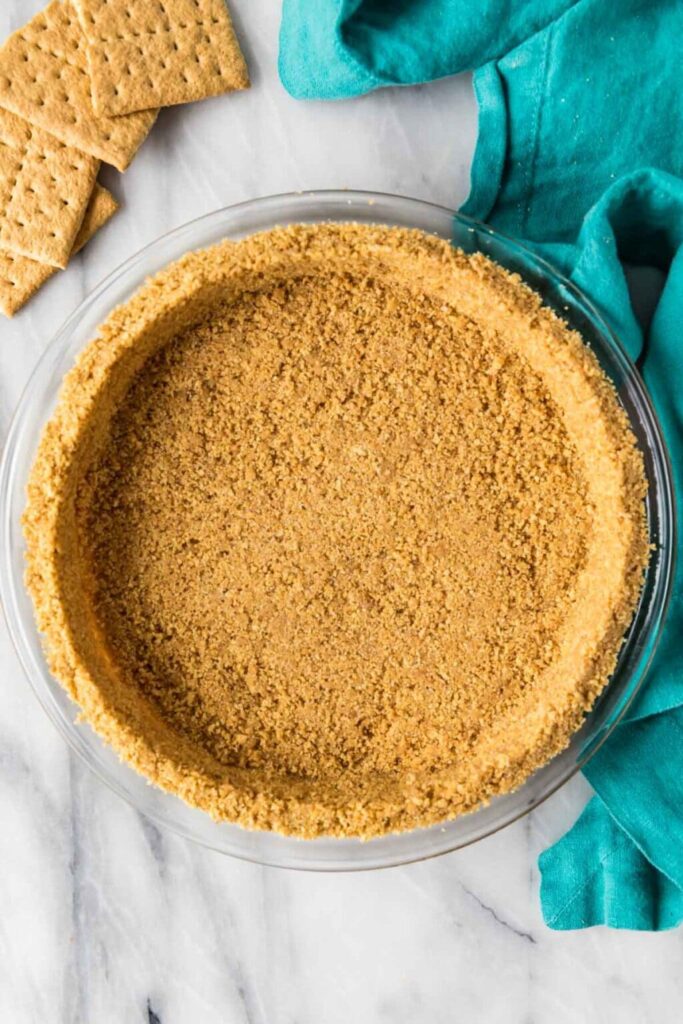
19) Graham Cracker Crust
A graham cracker crust is a quick and easy way to create a base for many desserts.
Start by preheating your oven to 350°F. Crush the graham crackers into fine crumbs using a food processor. Aim for about 1 1/2 cups of crumbs.
Next, add granulated sugar to the crumbs and blend well. Melt some butter and pour it into the mixture. Stir until everything is moistened.
Press the mixture into a 9-inch pie pan. Make sure it is even and compact.
If you are baking the crust, place it in the preheated oven for about 10 minutes.
Once done, let it cool before adding any filling. This crust works great for pies, cheesecakes, and other treats.

20) Cauliflower Pizza Crust
To make cauliflower pizza crust, start by preheating your oven to 400°F (200°C). Take a large head of cauliflower, remove the leaves, and chop it into florets. Use a food processor to pulse the cauliflower into rice-sized pieces. Aim for a fine, crumbly texture.
Spread the riced cauliflower on a parchment-lined baking sheet. Bake for about 15 minutes, or until it turns light brown. This step helps remove moisture and makes the crust firmer. Let it cool.
Once cool, transfer the cauliflower to a clean towel and squeeze out as much water as possible. Dryer cauliflower will result in a better crust. In a large bowl, mix the cauliflower with one beaten egg, half a cup of shredded mozzarella cheese, and your favorite seasonings.
Press the mixture onto a baking sheet lined with parchment paper, shaping it into a circle about a quarter-inch thick. Bake for 10-15 minutes or until it’s golden and crispy. Add your favorite toppings and bake for an additional 5-10 minutes.
You’ll have a delicious, low-carb alternative to traditional pizza crust ready to enjoy. This crust holds together well and offers a great base for any toppings.
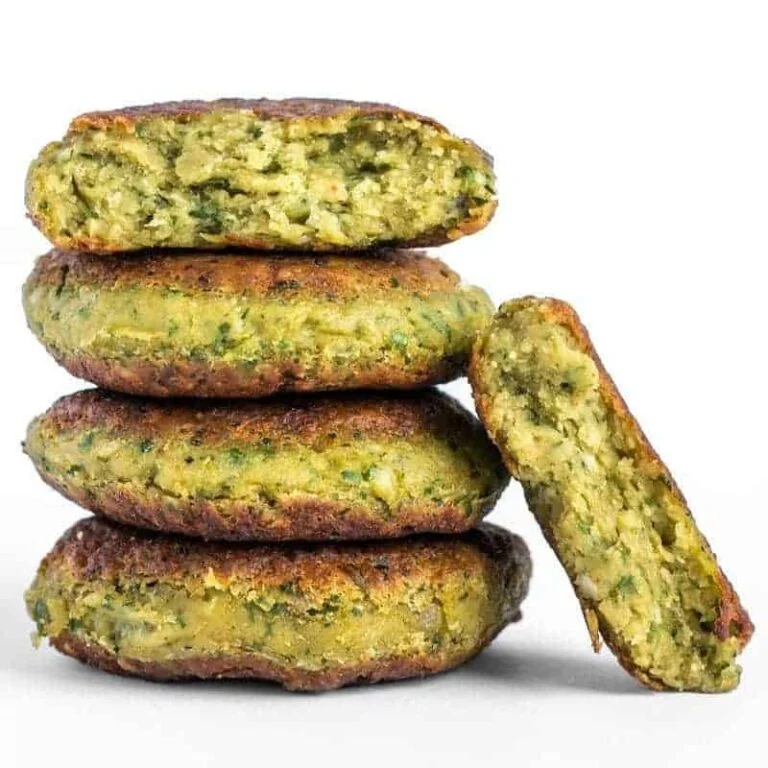
21) Falafel Mix
Falafel is a tasty and healthy Middle Eastern dish made from ground chickpeas or fava beans. To make the falafel mix, you’ll need a food processor to achieve the right texture.
Begin with dried chickpeas. Soak them overnight. Do not use canned chickpeas as they are too soft for falafel.
Add soaked and drained chickpeas to the food processor. Include chopped onions, parsley, cilantro, and garlic.
Season with spices like cumin, coriander, salt, and pepper. Some recipes may suggest a pinch of cinnamon for extra flavor.
Process the ingredients until you get a coarse paste. Scrape down the sides of the bowl as needed to ensure even mixing.
Refrigerate the mix for at least an hour. Chilling helps the mixture hold together better when cooking.
Shape the chilled mixture into small balls or patties. Using a small ice cream scoop or ¼ cup measuring cup can help with even sizing.
Bake, fry, or air fry your falafel. Baking at 350 degrees F takes around 20 to 25 minutes; flipping halfway through ensures even cooking.
For a crispy exterior, frying in an inch of oil works well. Air frying is another healthier option and takes about 12-14 minutes.
Understanding Food Processors
Food processors are powerful kitchen tools that can save you time and effort. They come in various types and include important features to enhance your cooking.
Types of Food Processors
Food processors come in three main types: full-size, compact, and mini.
Full-size processors offer the most versatility and power. They can handle large quantities and tough tasks like kneading dough.
Compact processors are slightly smaller and are great for everyday tasks like slicing, chopping, and grating.
Mini processors are perfect for small tasks such as making pesto or chopping nuts. They are easy to store and clean.
Key Features to Consider
When choosing a food processor, look for key features like motor power, bowl capacity, and attachments.
Motor power ranges from 400 to 1200 watts. Higher wattage means better performance.
Bowl capacity varies, with options from 3 to 14 cups. Choose based on the quantity of food you typically process.
Attachments like blades, discs, and dough hooks add versatility. Some models come with multiple speed settings and pulse functions for better control.
Maintenance and Care
Proper maintenance extends the life of your food processor.
Cleaning involves washing the bowl, blades, and attachments after each use. Most parts are dishwasher safe, but check the manual.
Storage is important. Keep your food processor in a dry place. Store extra blades and attachments safely to avoid damage.
Regular checks ensure the motor and other components are in good condition. Replace any worn parts promptly.
By considering the types, features, and maintenance, you can make the most of your food processor.
Cooking Techniques with a Food Processor
A food processor is a versatile kitchen tool that can save you time and effort when preparing meals. By mastering a few key techniques, you can make the most out of your food processor for various tasks like chopping, pureeing, and dough making.
Chopping and Slicing
Chopping and slicing are two of the most common uses for a food processor. With the right blade attachment, you can quickly chop vegetables like onions, carrots, and bell peppers into uniform pieces.
To chop, use the pulse button for better control over the size of the pieces. When slicing, make sure to place the vegetables properly in the feed tube. Use the slicing disk for even cuts.
Pureeing and Blending
Your food processor excels at pureeing and blending ingredients to create smooth textures. This function is perfect for making soups, sauces, and baby food.
To puree, add your cooked or raw ingredients to the bowl and let the processor run until you reach the desired consistency. Blending is similar but often involves adding liquids to achieve a smoother mix.
Kneading and Dough Making
Kneading dough by hand can be time-consuming and labor-intensive. The food processor simplifies this task with the dough blade attachment.
To knead dough, combine your ingredients in the bowl and run the processor until the dough forms a ball. The speed and power of the food processor make it efficient for doughs like pizza, bread, and pie crusts.
Nutritional Benefits of Using a Food Processor
Using a food processor can help retain more nutrients in your meals and make it easier to prepare healthy dishes at home. Learn how this versatile kitchen tool can enhance your cooking and promote better nutrition.
Retaining Nutrients
When you use a food processor, you can chop, slice, and puree fruits and vegetables quickly, which helps to preserve their nutritional value. Cooking with fresh ingredients ensures that you get the maximum vitamins and minerals.
Blending fruits and vegetables in a food processor prevents nutrient loss compared to methods like boiling, which can cause vitamins to leach out into the water. Keeping the skins on produce like apples, cucumbers, and carrots retains fiber and antioxidants.
Grinding nuts and seeds in a food processor helps you incorporate healthy fats and proteins into your diet. The quick processing time reduces the risk of nutrient degradation, keeping the food as fresh and nutritious as possible.
Healthy Recipe Ideas
Food processors enable you to make a variety of healthy recipes. For breakfast, try smoothie bowls made with blended berries, spinach, and yogurt.
For a snack, prepare homemade hummus using chickpeas, tahini, lemon juice, and garlic. This dip is rich in protein and fiber.
Dinner options include cauliflower rice, which is low in carbs and high in vitamins. Simply use the food processor to pulse cauliflower into small, rice-sized pieces.
Another idea is making your own nut butters, which are free from added sugars and preservatives. Process almonds or peanuts until smooth and enjoy with whole-grain bread or fruit slices.
